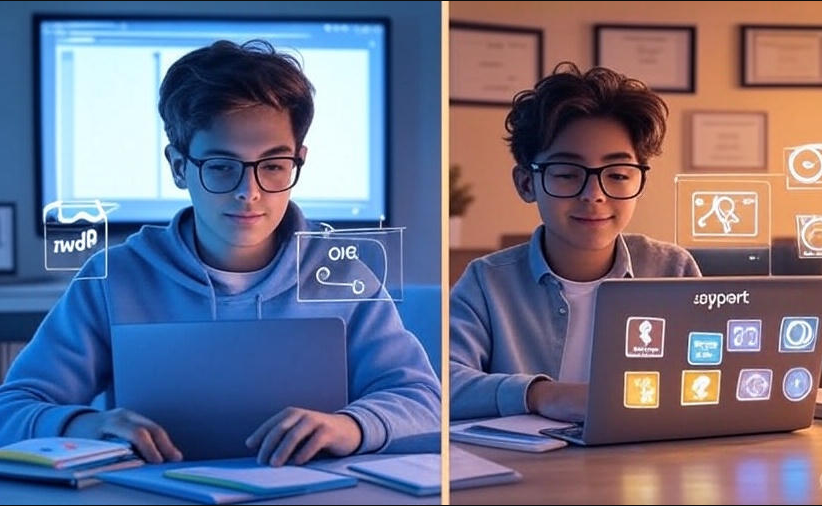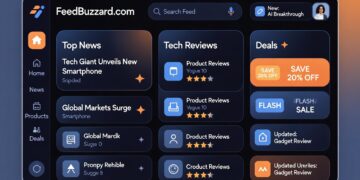In today’s digitally driven world, online education has become a mainstream path for learning new skills, pursuing career changes, or simply expanding personal knowledge. Whether you’re learning data science, photography, or a new language, there’s a broad spectrum of options available – many of them free, others requiring payment. But the pressing question remains: Free vs Paid Online Courses – What’s Worth It?
This article dives deep into the comparison between free and paid online courses. We’ll explore their features, pros and cons, target audiences, platform differences, real-world examples, statistics, and help you make an informed decision based on your learning goals, budget, and long-term aspirations.
Understanding Online Courses: Free vs Paid
Online courses come in various formats and are hosted across platforms like Coursera, Udemy, edX, Khan Academy, Skillshare, and LinkedIn Learning. While many platforms offer both free and paid versions, the differences in quality, support, and certification often vary significantly.
What Are Free Online Courses?
Free online courses typically provide open access to educational content without requiring any payment. They are widely available and may include video lectures, reading materials, and quizzes. Some platforms allow you to audit a course for free but require payment for certifications or graded assessments.
What Are Paid Online Courses?
Paid courses require a one-time fee or a subscription. In return, they usually offer a more comprehensive package – including structured lessons, expert feedback, mentorship, graded assignments, and recognized certificates upon completion. Paid platforms may also offer exclusive content and a more immersive learning experience.
Pros and Cons of Free Online Courses
Advantages
1. No Financial Commitment
Free courses allow learners to explore a subject without any financial pressure. They’re ideal for those who are unsure about a topic and want to explore it before committing more seriously.
2. Accessibility and Flexibility
Open access makes education available to people across socioeconomic backgrounds, promoting inclusive learning.
3. Great for Hobbyists and Beginners
Those looking to casually learn a new skill or dip their toes into a new subject can benefit greatly.
Disadvantages
1. Lack of Depth and Structure
Many free courses are limited in scope. They may provide an overview without going into detail, and the curriculum may not follow a well-structured progression.
2. No Official Recognition
Certificates, if available, often lack industry recognition. This can be a drawback for learners who need credentials for professional use.
3. Limited Support
There’s usually minimal or no interaction with instructors. If you’re stuck, you’re often on your own.
Pros and Cons of Paid Online Courses
Advantages
1. Comprehensive Learning Experience
Paid courses are often created by subject-matter experts and include a complete curriculum with progressive learning paths.
2. Industry-Recognized Certifications
If you’re looking to enhance your resume, many paid courses come with credentials from respected institutions or companies, increasing your professional value.
3. Access to Mentorship and Support
Support features such as live Q&A sessions, project feedback, and student communities can greatly enhance the learning process.
4. Higher Completion Rates
When learners invest money, they’re more likely to complete the course. This psychological commitment is crucial for long-term skill development.
Disadvantages
1. Cost Barrier
Not everyone can afford to pay for courses, especially high-quality ones from prestigious platforms.
2. Risk of Low ROI
Not all paid courses offer substantial value. Learners must research carefully before enrolling to avoid wasting money.
Who Should Choose Free Courses?
- Exploratory Learners: People who want to try a subject before diving deeper.
- Budget-Conscious Individuals: Those who cannot currently afford formal education.
- Hobbyists: People interested in acquiring new skills casually without the need for certification.
- Self-Motivated Learners: Individuals confident in navigating unstructured content.
Who Should Choose Paid Courses?
- Career-Changers: Those seeking to switch careers and need a comprehensive curriculum and recognized certification.
- Professionals: Individuals aiming to upskill or meet industry requirements.
- Students Seeking Structure: Learners who thrive with guided instruction, feedback, and milestones.
- Job Seekers: Those needing formal proof of their skills to boost employability.
Key Considerations When Choosing Between Free and Paid
1. Define Your Learning Goals
Are you learning for fun, or are you aiming for a job promotion? If it’s casual, free might suffice. If it’s career-driven, paid options are more reliable.
2. Assess Course Content and Reviews
Regardless of the price, the course’s content should align with your goals. Always check reviews, previews, and the instructor’s credentials.
3. Time Commitment
Consider how much time you can realistically dedicate. Some free courses are self-paced, while paid ones may follow a schedule.
4. Certification Needs
If you require proof of completion, such as for a resume or LinkedIn profile, ensure the course offers a recognized certificate.
5. Platform Reputation
Well-known platforms like Coursera, edX, and Udemy have quality control mechanisms. Prioritize platforms with transparent information and support.
In-Depth Platform Analysis
Coursera
- Free: Audit access to top university courses
- Paid: Certificates, assignments, specializations
edX
- Free: Self-paced access to content from Harvard, MIT
- Paid: Verified certificates, graded assessments
Udemy
- Free: Limited courses, often promotional
- Paid: Lifetime access to complete content
LinkedIn Learning
- Free: One-month trial
- Paid: Business-focused training, career paths
Khan Academy
- Fully Free: No premium model; ideal for K-12 and foundational topics
Skillshare
- Free: Limited-time trial
- Paid: Subscription to all creative and business classes
Real-World Examples
Case Study 1: Free to Paid Transition
Anna, a marketing professional, started with free courses on digital marketing. After gaining interest, she moved to a paid specialization on Coursera. With the certificate, she landed a better job with a global agency.
Case Study 2: Learning for Hobby
James, a software engineer, explored photography through free YouTube tutorials and MOOCs. He enjoyed the flexibility and learned enough for personal projects without spending money.
Case Study 3: Corporate Upskilling
Ravi’s employer sponsored him for a paid course on data analytics through LinkedIn Learning. The structured curriculum and assessments helped him lead data-driven projects, earning him a promotion.
Statistics on Online Learning
- A 2024 study by Class Central revealed that only 5–10% of learners complete free MOOCs unless they’re part of a verified certificate track.
- Paid course learners show completion rates of 40–60%, especially with mentorship and assessments.
- A LinkedIn Workplace Learning Report (2023) showed that 92% of executives believe soft skills learned through paid platforms improve team performance.
- Employers increasingly recognize online credentials from providers like Google, IBM, and HarvardX.
FAQs
Are free online courses really free?
Yes, but they often exclude certificates or additional features unless you pay. Many courses allow you to audit the content for free.
Can I get a job with a certificate from a paid online course?
It depends on the provider and course. Certificates from top platforms like Coursera (with university partners) or Google Career Certificates are well-regarded.
Are paid courses always better?
Not necessarily. Some free courses offer excellent value. However, paid courses typically come with better structure, support, and recognition.
What is the difference between auditing a course and enrolling in a paid version?
Auditing gives access to learning materials only. Paid versions often include assignments, feedback, exams, and certificates.
Which platforms offer the best free courses?
Khan Academy, MIT OpenCourseWare, and edX offer high-quality, completely free learning options.
Should I start with free courses or go straight to paid ones?
Starting with free courses is often a smart way to gauge interest. Once committed, investing in paid options can deepen your skills.
How do I know if a paid course is worth the money?
Read reviews, check the instructor’s credentials, look for curriculum previews, and consider refund policies. Platforms with trial periods are ideal for evaluation.
Conclusion
So, Free vs Paid Online Courses – What’s Worth It? The answer lies in your individual goals, resources, and expectations. Free courses are ideal for self-motivated learners or those testing the waters, while paid courses are better suited for structured, career-oriented learning with verifiable outcomes.
Before enrolling in any course, take time to evaluate what you need. Read reviews, preview the curriculum, and consider your end goals. With so many quality learning options online today, the right path is out there – whether it costs money or not.
Final Tip: Blending both free and paid resources can be the smartest strategy. Start with free courses to explore topics, then move to paid courses for deeper, guided learning and credentials.












